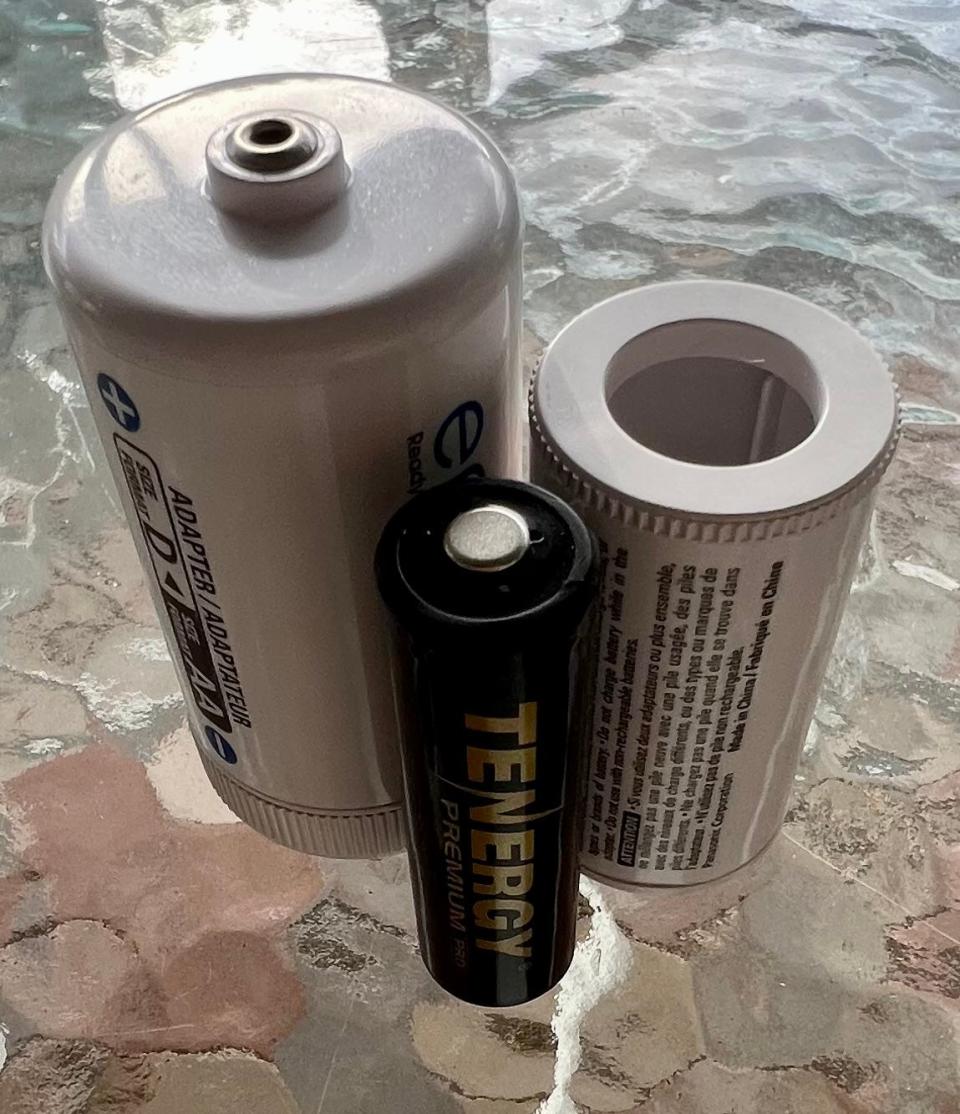Gadget Daddy: Yes, you can turn a AA battery into a C- or D-cell battery. How?

Riddle me this: I have a flashlight that uses D-cell batteries. But I don't own any D-cell batteries. How does the flashlight light up?
When I started the change-over from using alkaline batteries — which are sometimes prone to leak and thereby corrode the electronics they power — for rechargeable ones (which are far more economical and rarely leak), I didn't know the answer to that riddle either.
Rechargeable AA and AAA batteries are common. And there are good ones that match the performance of national brands, but without the price tag. Finding C- and D-cell rechargeables is far more difficult. And they are expensive: a two-pack of D batteries that recharge using a built-in USB port is $30 online. These batteries are so expensive that one website selling them offers: "Pay in four interest-free installments for orders over $50.00..." (Other brands are available for about $15 for two — but they'll need a D-cell charger, which adds to the cost.)
MORE FROM GADGET DADDY:
Rechargeable batteries perform as well as alkalines, without the corrosion
A flashlight for the masses? Small LED proved indispensable during hurricane
Lost an old Master Lock combination? There's a process to retrieve it
Imagine perfectly, crystal-clear ice. You just need the right equipment
The answer to the flashlight riddle, then, is this: The larger batteries that once ran the flashlight have been replaced with smaller AA batteries.
How does that work? There are "spacers" available for AA batteries: Simply put the AA in the spacer — which come in sizes for C- and D-cell batteries — and insert them into whatever electronics the C- or D-cells were powering.
The voltage will still be the same. The flashlight or whatever will still be as bright or work as well. The run time will be reduced, but the cost of replacing a single-use battery won't be there.
The spacers come in two sizes to make a AA into a C- or D-cell battery. Think of the spacers as a sumo-wrestling costume that makes the wearer look more like a helium balloon than a person. The AA battery is inserted into the sleeve, which comes with a filler to hold the smaller battery in place in its new, oversize slot in the electronic gadget.
The spacers are relatively cheap. A set of 10 C-size ones are sold on Amazon for $10. There are also six D-size sleeves offered for $8. For some of each, there is a package deal: Four C adapters and four D adapters for $20. (Yes, it's cheaper to buy the two aforementioned offers than it is the combined one.)
It's even possible to find adapter spacers that will convert AAA rechargeables into a C or D battery size.
The point is, I've never seen these spacers for rechargeable batteries sold in brick-and-mortar stores. And you aren't likely to, either. There's more profit in selling single-use batteries than in selling plastic sleeves for rechargeables at $1 or $1.50 each.
Thus we conclude three weeks of rechargeable battery columns. While single-use batteries are convenient, they are exactly that: Use them one time; dispose of them. And while $1 each may seem reasonable, costs mount up with each single use.

Rechargeables keep on giving — hundreds of times. They are relatively inexpensive: 16 rechargeable AA batteries purchased online work out to just under $1.70 each. They rarely corrode. They are much improved from the rechargeables of years ago, and can hold power longer — they generally will retain about 70% of their power after 30 days on the shelf. They need a charging unit, but using rechargeables instead of alkalines will quickly cover the cost of a good $30 charging unit.
Summing up: Rechargeables are good for your wallet — and the environment as well.
Lonnie Brown can be reached at LedgerDatabase@aol.com.
This article originally appeared on The Ledger: Sleeves and spacers turn AA or AAA batteries into C- or D-cell
